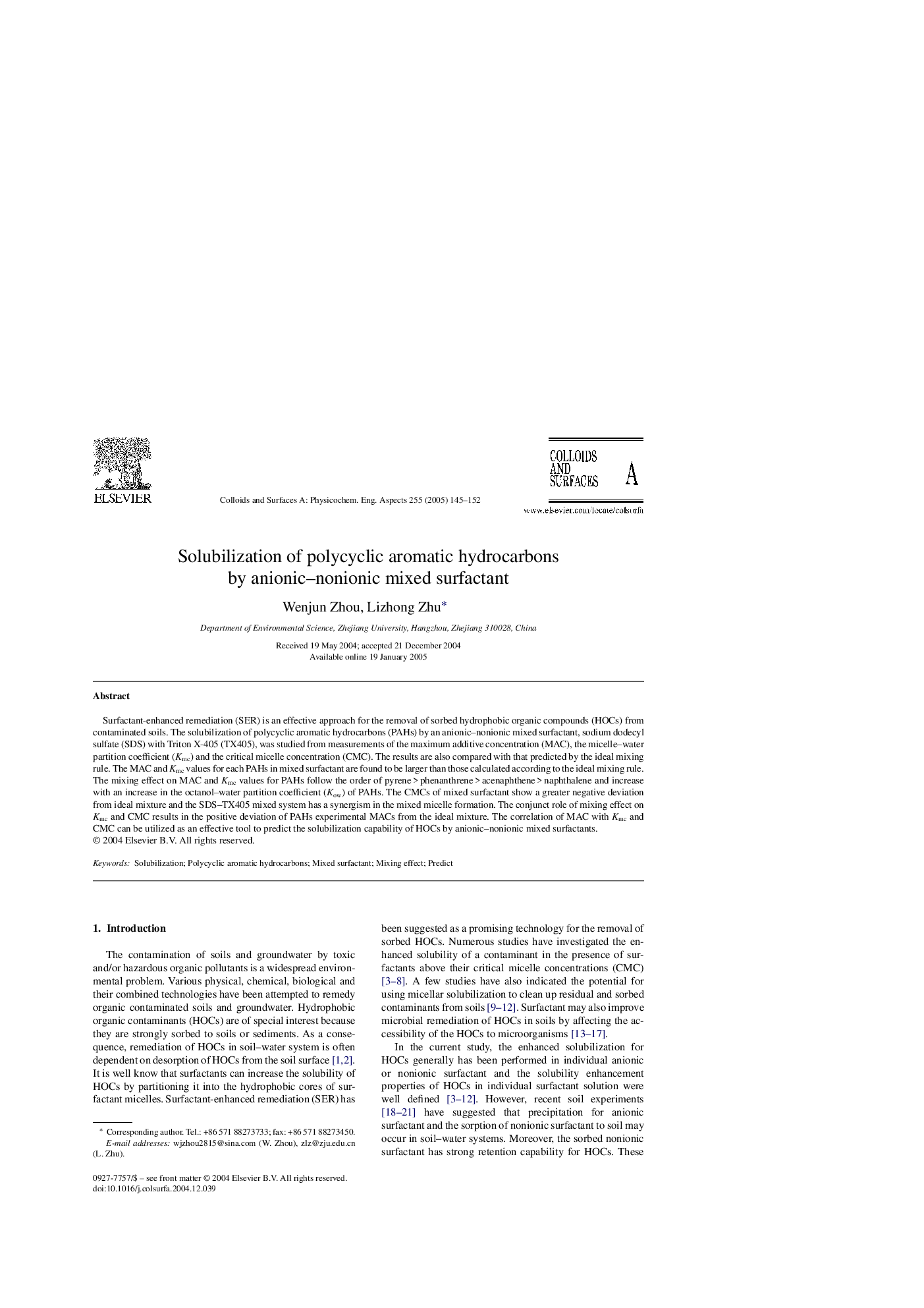| Article ID | Journal | Published Year | Pages | File Type |
|---|---|---|---|---|
| 9676067 | Colloids and Surfaces A: Physicochemical and Engineering Aspects | 2005 | 8 Pages |
Abstract
Surfactant-enhanced remediation (SER) is an effective approach for the removal of sorbed hydrophobic organic compounds (HOCs) from contaminated soils. The solubilization of polycyclic aromatic hydrocarbons (PAHs) by an anionic-nonionic mixed surfactant, sodium dodecyl sulfate (SDS) with Triton X-405 (TX405), was studied from measurements of the maximum additive concentration (MAC), the micelle-water partition coefficient (Kmc) and the critical micelle concentration (CMC). The results are also compared with that predicted by the ideal mixing rule. The MAC and Kmc values for each PAHs in mixed surfactant are found to be larger than those calculated according to the ideal mixing rule. The mixing effect on MAC and Kmc values for PAHs follow the order of pyrene > phenanthrene > acenaphthene > naphthalene and increase with an increase in the octanol-water partition coefficient (Kow) of PAHs. The CMCs of mixed surfactant show a greater negative deviation from ideal mixture and the SDS-TX405 mixed system has a synergism in the mixed micelle formation. The conjunct role of mixing effect on Kmc and CMC results in the positive deviation of PAHs experimental MACs from the ideal mixture. The correlation of MAC with Kmc and CMC can be utilized as an effective tool to predict the solubilization capability of HOCs by anionic-nonionic mixed surfactants.
Related Topics
Physical Sciences and Engineering
Chemical Engineering
Colloid and Surface Chemistry
Authors
Wenjun Zhou, Lizhong Zhu,
